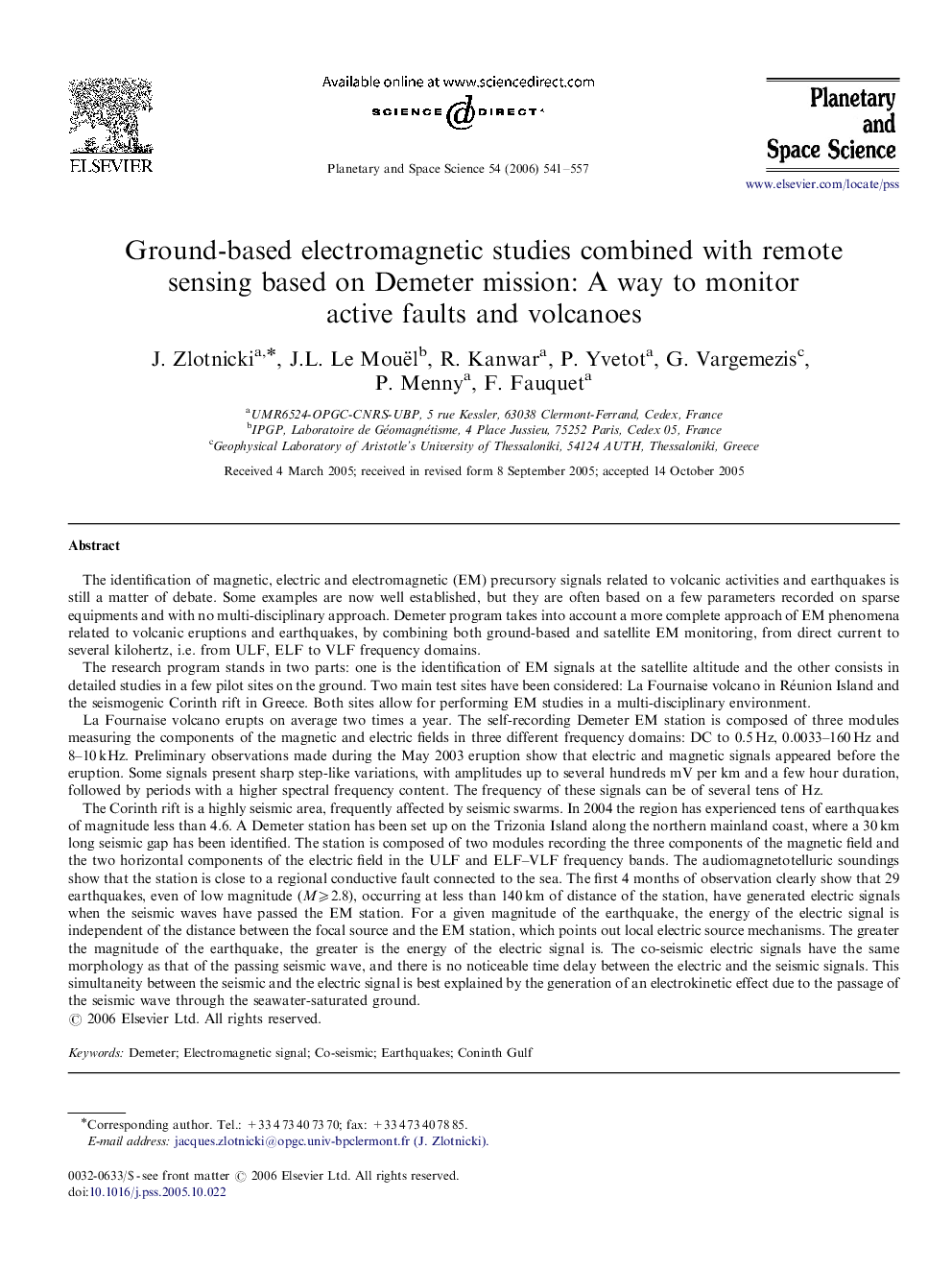| کد مقاله | کد نشریه | سال انتشار | مقاله انگلیسی | نسخه تمام متن |
|---|---|---|---|---|
| 1782853 | 1022366 | 2006 | 17 صفحه PDF | دانلود رایگان |

The identification of magnetic, electric and electromagnetic (EM) precursory signals related to volcanic activities and earthquakes is still a matter of debate. Some examples are now well established, but they are often based on a few parameters recorded on sparse equipments and with no multi-disciplinary approach. Demeter program takes into account a more complete approach of EM phenomena related to volcanic eruptions and earthquakes, by combining both ground-based and satellite EM monitoring, from direct current to several kilohertz, i.e. from ULF, ELF to VLF frequency domains.The research program stands in two parts: one is the identification of EM signals at the satellite altitude and the other consists in detailed studies in a few pilot sites on the ground. Two main test sites have been considered: La Fournaise volcano in Réunion Island and the seismogenic Corinth rift in Greece. Both sites allow for performing EM studies in a multi-disciplinary environment.La Fournaise volcano erupts on average two times a year. The self-recording Demeter EM station is composed of three modules measuring the components of the magnetic and electric fields in three different frequency domains: DC to 0.5 Hz, 0.0033–160 Hz and 8–10 kHz. Preliminary observations made during the May 2003 eruption show that electric and magnetic signals appeared before the eruption. Some signals present sharp step-like variations, with amplitudes up to several hundreds mV per km and a few hour duration, followed by periods with a higher spectral frequency content. The frequency of these signals can be of several tens of Hz.The Corinth rift is a highly seismic area, frequently affected by seismic swarms. In 2004 the region has experienced tens of earthquakes of magnitude less than 4.6. A Demeter station has been set up on the Trizonia Island along the northern mainland coast, where a 30 km long seismic gap has been identified. The station is composed of two modules recording the three components of the magnetic field and the two horizontal components of the electric field in the ULF and ELF–VLF frequency bands. The audiomagnetotelluric soundings show that the station is close to a regional conductive fault connected to the sea. The first 4 months of observation clearly show that 29 earthquakes, even of low magnitude (M⩾2.8), occurring at less than 140 km of distance of the station, have generated electric signals when the seismic waves have passed the EM station. For a given magnitude of the earthquake, the energy of the electric signal is independent of the distance between the focal source and the EM station, which points out local electric source mechanisms. The greater the magnitude of the earthquake, the greater is the energy of the electric signal is. The co-seismic electric signals have the same morphology as that of the passing seismic wave, and there is no noticeable time delay between the electric and the seismic signals. This simultaneity between the seismic and the electric signal is best explained by the generation of an electrokinetic effect due to the passage of the seismic wave through the seawater-saturated ground.
Journal: Planetary and Space Science - Volume 54, Issue 5, April 2006, Pages 541–557